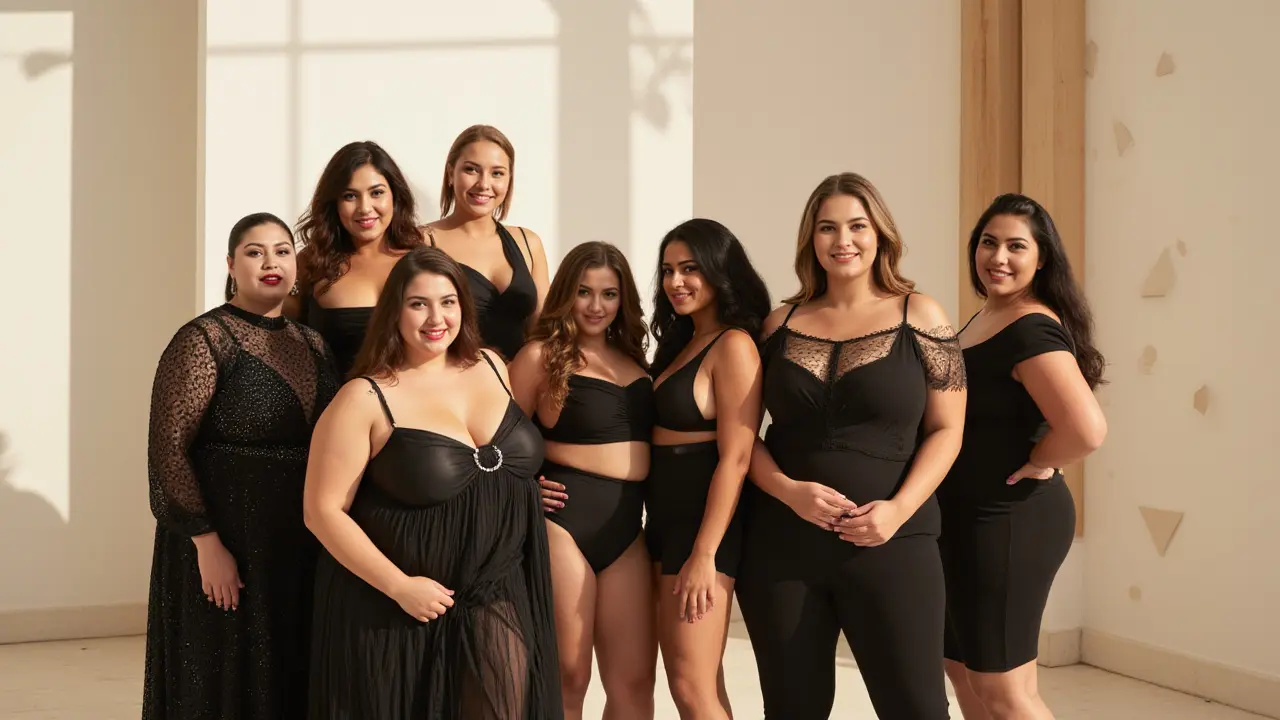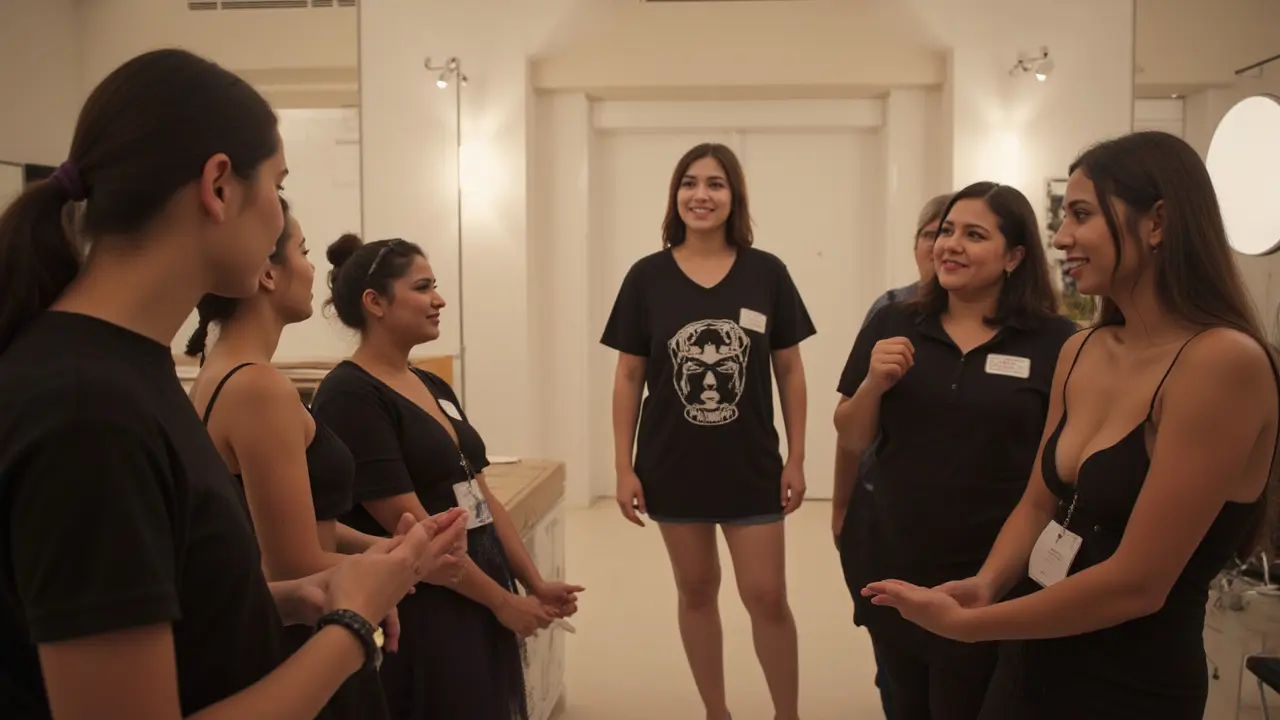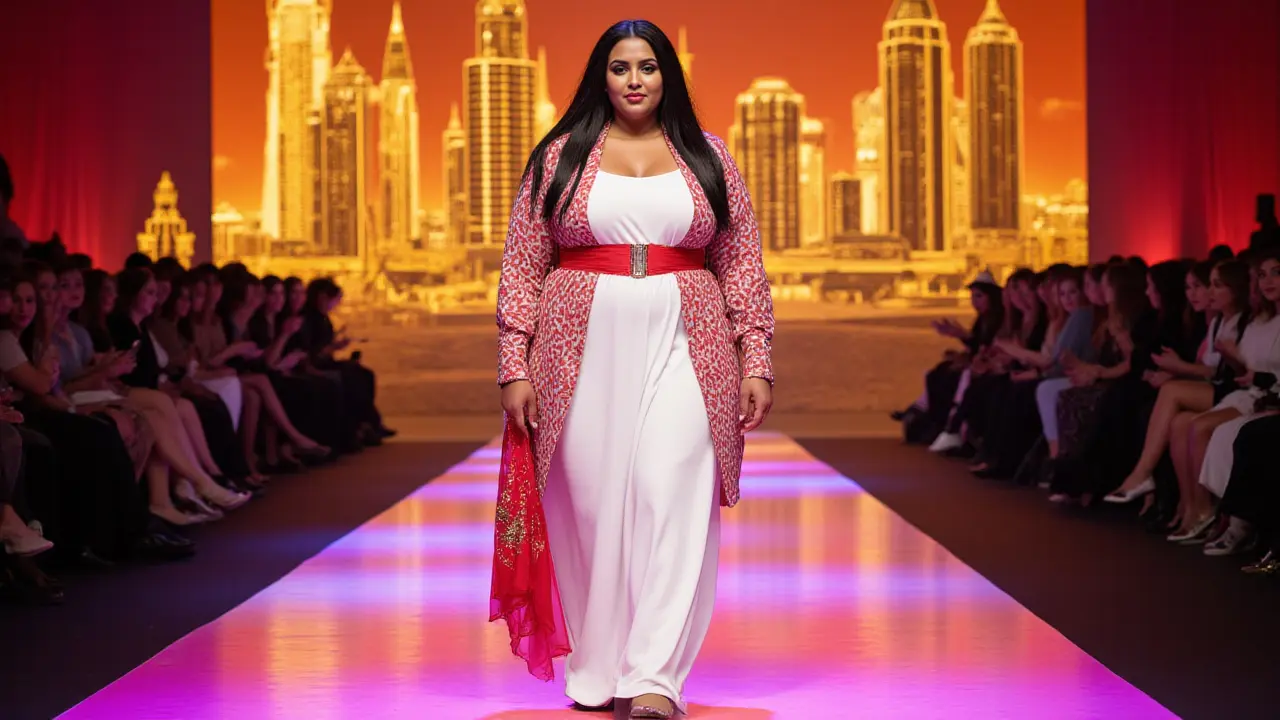Industry terms can set the tone for so much more than just job descriptions. When it comes to models who aren’t sample size, things get interesting fast. You hear people say “plus-size model,” “curve model,” even “full-figured” or “body positive model,” but what do these words really mean? And do they all mean the same thing? The short answer: not quite. How we refer to chubby models reflects more than fashion trends—it says a lot about who’s allowed to feel seen and beautiful.
What Are Chubby Models Called? Breaking Down the Industry Lingo
Everyone loves a straight answer, right? The most common term for chubby models in the industry is “plus-size model.” That’s the phrase you’ll spot in agency listings, ad campaigns, and castings. But it’s not the end of the story. “Curve model” has become a trendy, empowering label—especially in Europe and in campaigns aiming for a younger, hip feel. There’s also “full-figured model” and, more rarely, “extended size model” if brands are offering clothes beyond the traditional plus-size range.
What’s wild is how the size cut-off for these terms changes dramatically. In fashion capitals like New York and Paris, “plus-size” can start as low as US size 8 or 10—sizes a lot of people wouldn’t even call chubby. In commercial catalogs, plus-size might start at size 12, sometimes 14 or 16. If you follow body positive creators or TikTok fashion hauls, you’ll hear people using “curvy,” “thick,” and even “midsize” to describe themselves. But, in the actual modeling biz, “plus-size model” remains the catchall, even if most professional plus models are nowhere near the actual average size of women shopping in the real world.
This isn’t just about clothes—these terms tell us who gets a seat at the style table. Twenty years ago, most agencies in the US didn’t have plus-size divisions at all. It wasn’t until campaigns like Dove’s Real Beauty in 2004 and models like Ashley Graham started breaking big around 2015 that “plus-size” shifted from a whispered insult to a headline-worthy badge of honor. The parade of labels isn’t only about semantics; it comes with new attitudes and business models. Now, body inclusivity is a full-on brand strategy and “curve model” is sometimes used to suggest a cool, high-end approach—think less catalog, more street style spread.
But the story doesn’t stop here. Even today, the same model might be called “plus-size” in New York, “curve” in London fashion week, and “full-figured” in a Southern US department store ad. And it can be a double-edged sword. Some models embrace these words as a point of pride, while others want to just be called “model”—no size label required. Honestly, the scene’s evolving so quickly, casting directors, brands, and even everyday shoppers are still figuring it all out. Bottom line: if you’re searching for jobs or inspiration, plug in all the terms—plus-size, curve, body positive model—to find what suits your vibe.

Why the Name Matters: Representation, Opportunities, and Fashion Perks
So, why does it matter what we call chubby models? Naming conventions are more than just words—they shape how the world sees bodies. Consider this: according to recent data from the International Modeling Federation, 67% of women in the United States wear at least a size 14, yet plus-size models make up less than 2% of editorial and high fashion jobs. That disconnect highlights why the language around “plus-size” still feels charged—and why those labels have power.
For real-world models, knowing how to identify yourself can open (or close) doors. Some agencies have separate “curve” boards, and jobs might be listed as “plus-size bridal,” “curve swimwear,” or “body confident activewear.” Search engines, too, prioritize these keywords. Let’s say you’re fresh to modeling in Dubai or London and looking for castings—being able to toggle between “plus-size castings” and “curve model opportunities” can double your chances of finding gigs. It's almost like a secret password into a club that's getting bigger every year.
The benefits go beyond the industry. For a lot of shoppers, seeing curve or plus-size models signals, “Hey, this brand actually gets it—they want people like me to buy from them.” According to a 2023 survey by The Fashion Spot, ads using plus-size and curve models scored 60% higher in consumer trust for size-inclusive brands. Plus, people are more likely to buy if they see someone with their body type.
Modeling in the chubby category doesn’t just mean bigger clothes. These models spearhead new trends: bright colors, bold prints, and edgy streetwear once reserved for smaller bodies now pop up on the racks of ASOS Curve and Savage X Fenty. Runway rules are shifting too. Look at brands like Chromat, Christian Siriano, and even Victoria’s Secret, all of which have featured curve models recently. When Sports Illustrated first put a plus-size model on their Swimsuit Issue cover in 2016, Google searches for “plus-size swimwear” spiked by over 400% overnight. Representation isn’t just empowering—it’s smart business.
It’s not always smooth sailing, though. Plus-size and curve models deal with stereotypes, sizing inconsistencies, and everything from insensitive comments to poorly lit shoots where the creative team still “doesn’t know what to do” with a rounder body. But as more brands wake up to the buying power of all shapes, top agencies like IMG, Wilhelmina, and Milk have expanded their rosters to include everyone from classic “plus-size” to Indigenous, trans, and differently-abled models in the same divisions. “Chubby model” isn’t an insult anymore—it’s an in-demand profession that comes with its own perks, challenges, and sense of community.

How to Break In: Tips for Aspiring Curve and Plus-Size Models
If you’re reading this thinking, “Could I be a curve model?”—welcome to the party. The good news is you don’t need runway experience or a massive Instagram to start. These tips can help you find your spot in the industry faster than you’d expect.
- Research agencies that represent plus-size or curve talent. Not every agency truly supports body diversity, so check who’s on their curve or plus boards. Agencies with strong reputations include Ford Models Curve, IMG Curve, and UK-based Milk Model Management.
- Get comfortable in front of a camera but don’t worry about pro photos at first. Today, agencies are looking for clean, natural polaroids—think simple outfit, natural light, and confidence.
- Know your measurements; agencies typically ask for your height, bust, waist, and hip sizes to see if you fit their client needs. In plus-size modeling, someone between US size 12 and 18 is usually in highest demand, but ranges can be wider in different markets.
- Use multiple labels in your applications. Search and tag with “plus-size,” “curve,” “full-figured,” and “body positive model.” Sometimes it’s just about showing up in the right search.
- Showcase your personal style unapologetically. The modern curve model isn’t about blending in; brands want to see bold personalities, streetwear, luxury, and unique voices.
- Build your own brand on social media. You don’t need 100k followers, but an authentic feed showing confidence, style, and personality impresses scouts.
- Don’t be discouraged by mismatched sizing. Brands’ “curve” or “plus” categories aren’t standardized; one label’s 14 is another’s 18. Use that as motivation to push for change and call out brands that don’t deliver.
- Network with other curve and plus-size models. Online groups and forums like The Curvy Fashionista Community or Model Mayhem plus-size boards offer advice and camaraderie.
The coolest part? The world of plus-size, curve, and body positive modeling is evolving by the week. Just a couple years ago, a mainstream denim label wouldn’t dream of casting a US size 20 woman. Now, brands lose customers if they leave bigger bodies out. Whether you identify as chubby, curvy, or simply a model, you’re moving in an industry that’s growing—and being yourself is suddenly the most valuable thing you can offer.
